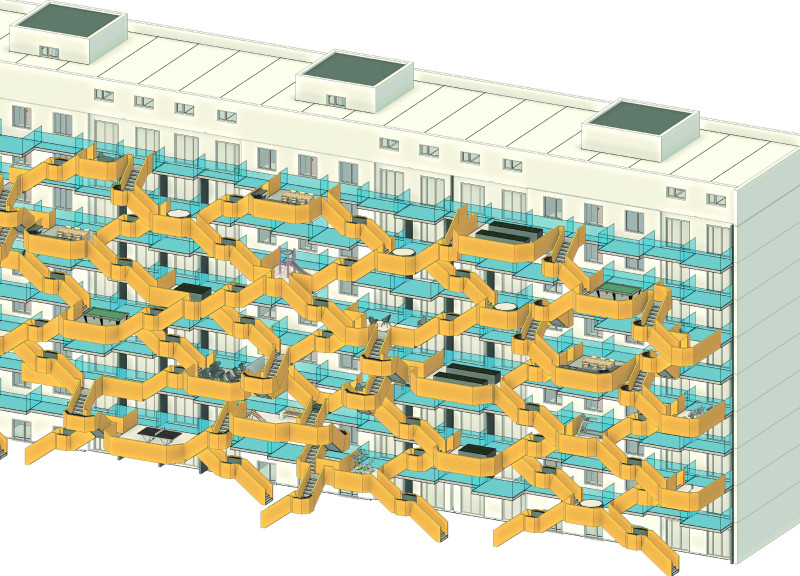5 key facts about this project
At its core, the architecture of this project represents a harmonious blend of form and function. It is designed to accommodate [insert specific functions such as residential living, community gatherings, or commercial activities], thereby prioritizing the needs of its users. The thoughtful spatial organization facilitates a smooth flow between different areas, enhancing the overall experience for occupants and visitors alike. The design promotes interaction through open spaces, common areas, and strategically placed amenities that encourage social engagement while maintaining necessary privacy.
The project employs a diverse but carefully curated palette of materials that not only fulfill practical roles but also contribute to the aesthetic quality of the architecture. Concrete is used extensively throughout for its structural integrity and durability, allowing for bold forms and expansive open spaces. Glass elements are skillfully incorporated to invite natural light into the interiors, fostering an uplifting atmosphere while also connecting the indoors with the outdoor environment. Steel accents provide a modern touch, supporting various structural components while synergizing with other materials used in the project. Additionally, wood elements are introduced to create warmth and texture, helping to soften the overall aesthetic and cultivate a welcoming environment. Stone, perhaps locally sourced, enhances the connection to the surrounding landscape and adds a sense of permanence to the structure.
Unique design approaches within this project set it apart from traditional methodologies. One distinguishing feature is the careful integration of green technologies aimed at fostering sustainability. Innovative solutions such as rainwater harvesting systems, green roofs, and solar energy installations have been artfully woven into the architectural fabric, creating a model of environmental responsibility. These elements not only reduce the ecological footprint of the building but also serve as educational touchpoints for users, embodying the project’s commitment to sustainability.
Another notable aspect is the incorporation of spatial flexibility within the design. By allowing for multifunctional spaces that can adapt to a variety of uses over time, the architecture accommodates the changing needs of its occupants. This adaptability isn’t merely practical; it reflects a deeper understanding of community dynamics and growth. As such, the project is designed to evolve alongside the community it serves.
Additionally, the landscape architecture surrounding the project plays an integral role in enhancing the overall user experience. Outdoor spaces are intricately linked with the building, providing seamless transitions that invite occupants to enjoy the natural environment. The landscaping incorporates native plants, which contribute to local biodiversity while requiring minimal maintenance, further supporting the project’s sustainable goals. The thoughtful design encourages outdoor activities and community gatherings, thus reinforcing the social fabric of the area.
The project’s architectural strategies demonstrate a clear understanding of both contemporary architectural ideas and timeless principles. It engages thoughtfully with its geographical context, responding sensitively to local climatic conditions, topography, and cultural heritage. The architectural design harmonizes with the existing urban fabric, providing a positive contribution to the streetscape while making a statement about modern living.
In summary, this architectural project encompasses a holistic approach that intertwines functionality, sustainability, and community engagement. Its careful material selection, innovative strategies, and responsive design principles work in concert to create a space that meets present needs while remaining adaptable for the future. Readers interested in gaining deeper insights into the project are encouraged to explore its architectural plans, sections, and detailed designs. Such exploration will provide a comprehensive understanding of the thoughtful considerations that underpin this architectural endeavor.


 Yaqiao Liu,
Yaqiao Liu,  Ziyang Xu
Ziyang Xu 






















